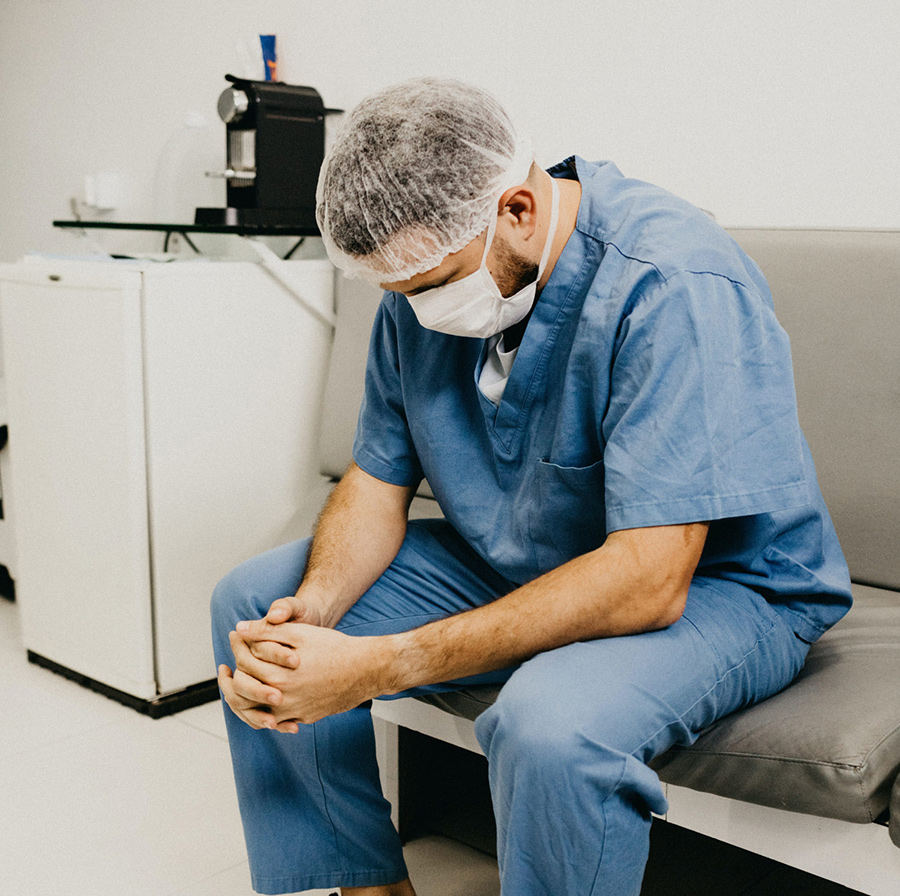In a multi-part series, Health Evolution is examining the future of the health care workforce. As we reach the one-year mark of when the pandemic begun disrupting lives across America, how has the virus changed the mindset of CEOs and organizational leaders in terms of how they view their employees and the skills they need to cultivate? For part three, we’re looking at the renewed importance of employee wellness, safety and culture in health care.
Part one: Virtual care, borderless recruiting and remote working
Part two: Can community health workers and empathy improve inequity and reduce disparities?
In a year of increased disparities of care, packed ICUs, economic uncertainty, and a lot of death—mental health has never seemed more important.
But health care leaders aren’t just focused on the mental health of their patients, although that’s clearly becoming a priority. What’s increasingly important is employee wellbeing. In a recent survey, every health care executive interviewed by Deloitte said they were concerned over their employees’ mental and spiritual health.
Every single one.
“What we saw during the pandemic was a whole rethinking from a culture perspective because the entire spectrum of people’s lives really mattered. We saw a change in things that would typically be considered benefits and how those ways of supporting people completely changed,” says Jennifer Radin, Chief Innovation Officer for Deloitte’s Health Care practice. “Some of the things health care workers did to support, especially clinical workers, whether it was getting them hotel rooms, food, laundry created a new kind of relationship where they weren’t just coming in and punching a timecard, but really part of the fabric of the organization.”
Yet, there is more work to be done. According to a new survey from Ginger, there is a huge gap in how CEOs perceive what they are doing for employee mental health and how the employees themselves view the efforts from their organization. The survey found that 96 percent of CEOs think they are doing enough for mental health but only 69 percent of employees agree. Another survey, from Willis Towers Watson, found that 62 percent of organizations are making improving their mental health benefits and stress management programs a top priority and 93 percent say behavioral health will be an organizational priority.
Going forward, experts are certain that organizations will have to act on these issues to attract top talent. CEOs must create a cultural environment that thoroughly addresses employee wellbeing and safety, not just with lip service but tangible actions.
“We’re talking about a culture change when we’re talking about wellbeing. They are not just programs, initiatives, and libraries of resources. It’s creating an environment where it’s OK to talk about feelings and health in the workplace. A recent survey found 30 percent of workers fear discussing mental wellness topics in the workplace. They fear they will lose their job,” Ann Powell, Executive Vice President and Chief Human Resources Officer, Bristol Myers Squibb, said during a recent event for The Conference Board. She put the onus on leaders to set the example.
“The best leaders are out there saying, ‘It’s OK not to be OK.’ Those leaders need to ask the right questions, encourage the right solutions, share examples and be out there in front of others. More employees are looking to their organizations as that trusted source of stability and information,” Powell said.
Wellness initiatives
One organization that isn’t waiting to act on employee wellbeing and wellness is Tucson Medical Center, a nonprofit regional hospital with more than 600 beds. Judy Rich, the hospital’s CEO who came on board amid another crisis in 2007 when it was losing more than $1 million per month, said Arizona has been the sixth hardest hit state in the U.S. It has caused significant impact to the organization’s 4,500 employees.
“What we have now is a workforce with real PTSD and a workforce, primarily with the frontline caregivers, who are so physically and emotionally tired that they’ve even there even having a difficult time articulating how they feel. A lot of them are withdrawing. Our turnover has gone up in nursing and we are pulling every possible support system out that we can to keep them going,” says Rich.
What has that meant? Most prominently, Tucson Medical Center opened a virtual school, which allows school-aged children of frontline workers to do distance learning in a group setting (socially distant of course) so they can have live interactions with other kids. The school allows parents to know their kids are learning and socializing, while focused on their jobs. Rich says it started when she was listening to a mother who told her that her nine-year-old child had become depressed.
That’s not all—telehealth counseling, face-to-face counseling, meals from the cafeteria 24 hours per day, home delivery laundry (35 pounds worth per employee), free oil changes, and increased communication are among the other supports Tucson Medical Center is offering employees. The system even launched a time away option for critical care nurses who have been the hardest hit and unable to take vacations.
“We’ve offered a program for them away from the hospital, at a local retreat, where they can spend a couple of days taking care of themselves. Getting a massage. Speaking to counselors. Taking classes on mediation. Starting to deal with the trauma that they’ve been through,” says Rich.










